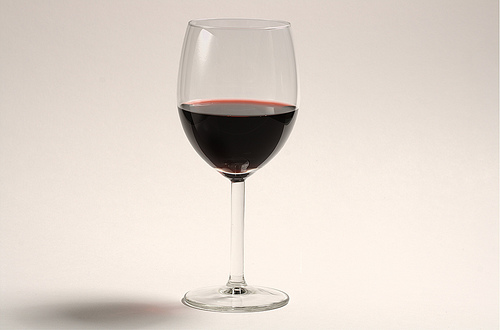
A Glass Of Wine Once In A While Is OK
Alcohol is associated with a high risk of heart attacks, stroke, high blood pressure, breast cancer, accidents and suicide. Excessive alcohol intake will also cause dependence and withdrawal syndrome. Alcohol use in moderation is shown to be beneficial with regards to the risk of heart disease. Wine in moderation increases the HDL levels in your blood and reduces the chance of atheromatous plaque formation. Blood clots form blocking vessels at plaque sites when the vessel lining cells are damaged. Wine is made of grapes, which contain flavonoids and anti-oxidants that protect the vessel lining cells from free radical damage. This is very important for diabetics because diabetes caused a lot of oxygen free radicals to form.
- Important notification about information and brand names used in this slideshow!
- Photo courtesy of Davide Restivo by Flickr : www.flickr.com/photos/somemixedstuff/3104965989/
- Clinical nutrition by Alan R Gaby
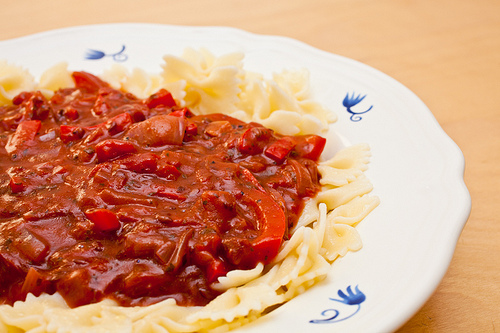
Eat Less Meat
The adult daily requirement of protein is around 100 to 200g, based on a 2000 calorie diet. Thus, 35% of the adult diet needs to be proteins. This protein amount need not necessarily be from meat products. There are amino acids that are found only in animals (essential amino acids) but those are needed in minute quantities. Consuming a small amount of meat only to get the essential amino acids is adequate. Some types of meat products contain a lot of fat and these are mostly saturated fats. A high intake of saturated fat is associated with elevated blood cholesterol levels, heart attacks and strokes.
- Important notification about information and brand names used in this slideshow!
- Photo courtesy of Björn Nordqvist by Flickr : www.flickr.com/photos/nordqvist/5744494498/
- Clinical nutrition by Alan R Gaby
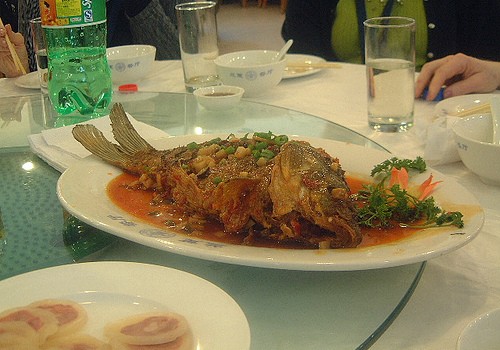
Fish
Fish are rich in polyunsaturated omega 3 and omega 6 fatty acids. Your diet needs to contain more omega 3 than omega 6 fatty acids. Intake of omega 3 fatty acids reduces serum cholesterol levels and your risk of a heart attack and stroke. Fish also contains vitamins B6 and 12. Vitamin B6 is essential for the synthesis of haemoglobin, nicotinic acid and certain neurotransmitters. It regulates amino acid metabolism in the human body. Vitamin B12 acts as a cofactor in methionine synthesis. Methionine is almost always the first amino acid incorporated into proteins synthesized in the human body. Vitamin B12 also plays a pivotal role in carbohydrate, lipid and protein metabolism.
- Important notification about information and brand names used in this slideshow!
- Photo courtesy of prettydaisies by Flickr : www.flickr.com/photos/prettydaisies/112547317/
- Clinical nutrition by Alan R Gaby
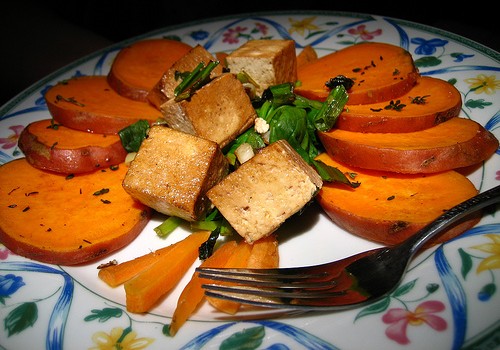
Okinawa Diet
This diet received global attention because the people of Okinawa seem to have a long life expectancy; among the highest globally. The Okinawa diet consists of low calorie foods. Carbohydrates provide around 85% of the total energy intake with proteins and fats providing 9% and 6% respectively. Okinawans consume a lot a grains, and therefore much of the dietary carbohydrates are insoluble fibers. A small amount of fish is also added to the diet. Pork is a main dish and it is interesting to note that even the internal organs are consumed. Okinawa is also famous for having a low rate of heart attacks and strokes.
- Important notification about information and brand names used in this slideshow!
- Photo courtesy of Rudi Riet by Flickr : www.flickr.com/photos/rudiriet/2316632823/
- Clinical nutrition by Alan R Gaby

Watermelon
Watermelon is a low-calorie fruit. It contains 30 calories per serving of 100g. True to its name, much of its weight is water. It is rich in vitamin A, C and magnesium. The daily dietary requirement of vitamin A is around 700 micrograms per day for a young adult male. Vitamin A is essential for color vision, transcription of genes to form messenger RNA strands, maintenance of skin by regulating the maturation of keratinocytes (skin cells containing keratin), immune function, intrauterine development, bone formation, blood cell formation in bone marrow and protecting blood vessel lining cells from oxygen free radical damage. Less cell damage translates into a low risk of heart attacks and strokes. Vitamin C is essential for collagen synthesis and maturation. Magnesium is essential as a cofactor in biological reactions.
- Important notification about information and brand names used in this slideshow!
- Photo courtesy of Jonathan Gropp by Flickr : www.flickr.com/photos/gropp/2607983330/
- Clinical nutrition by Alan R Gaby
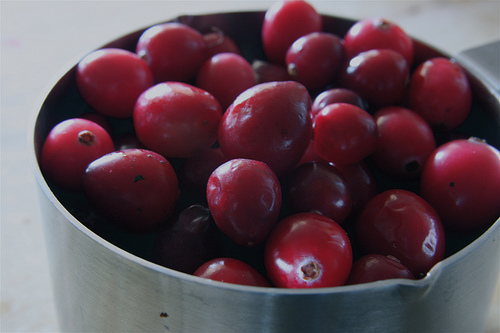
Cranberries
Cranberries contain anti-oxidants that protect the blood vessel wall from oxygen free radical damage especially in diabetic patients; therefore it reduces the risk of heart attacks, strokes and peripheral vascular disease. Anti-oxidants are an essential part of the innate immune system and they prevent pathogens from multiplying in tissues. Cranberries have a high citric acid content which helps acidify urine and prevent urinary stone formation. Eating cranberries will increase the acidity of the mouth and prevent gingivitis and dental caries. Excessive intake of cranberries can damage the tooth enamel by regular acid contact. Cranberries have a compound called proanthocyanidin which prevent colonization of the urinary tract by Escherichia coli.
- Important notification about information and brand names used in this slideshow!
- Photo courtesy of Shaw Girl by Flickr : www.flickr.com/photos/district_diva/3163286605/
- Clinical nutrition by Alan R Gaby
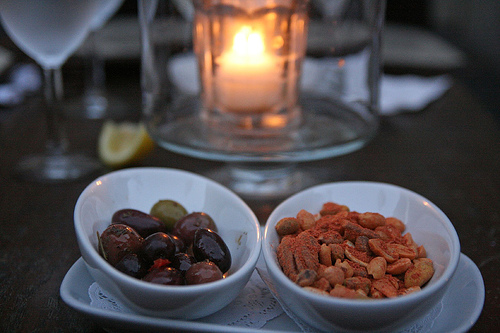
Raise Good Cholesterol
High density lipoproteins (HDL) are also called "good cholesterol". High HDL levels with low LDL levels will lower your risk of strokes and myocardial infarctions. LDL contains a higher percentage of fatty acids than HDL. LDL transports fatty acids towards cells — when LDL is high, a large amount of fatty acids are taken into blood vessel lining cells, and tissue macrophages (a type of white blood cell) found beneath the lining cells of blood vessels become saturated with fat and become foam cells. Inflammatory mediators released by the altered macrophages cause vessel wall thickening. HDL is formed when fatty acids are removed from the LDL at target tissues. When the removal is efficient, LDL is reduced and HDL rises. The amount of fatty acids entering the vessel walls reduces and plaque formation goes down too.
- Important notification about information and brand names used in this slideshow!
- Photo courtesy of Marc Levin by Flickr : www.flickr.com/photos/mil8/493413728/
- Clinical nutrition by Alan R Gaby

Eat Slowly
Taking your time eating your meal prolongs the duration of the stimulation of the brain satiety centres. This reduces the plasma levels of leptin, which is the hunger chemical in the body. Eating slowly will reduce your overall appetite because there is enough time for the glucose from the first part of the meal to enter the blood stream and reduce the hunger signals coming from the brain. This reduces the net intake of calories and prevents overweight and obesity. In turn there is a reduced risk of stroke, cardiac events and peripheral vascular diseases.
- Important notification about information and brand names used in this slideshow!
- Photo courtesy of Monik Markus by Flickr : www.flickr.com/photos/42954113@N00/5003614995/
- Clinical nutrition by Alan R Gaby

Fruit And Vegetables
According to the World Health Organization health bulletin of 2011, non-communicable diseases like diabetes, high blood pressure, heart diseases, stroke and peripheral vascular disease are associated with a low dietary intake of fruits and vegetables. Fruits and vegetables are among the low calorie foods you should be eating more of, and they contain complex carbohydrates that are digested slowly. The insoluble dietary fibers reduce glucose absorption. Therefore, blood glucose levels rise slowly after you eat fruits and vegetables. Fruits and vegetables contain a lot of vitamins and minerals which are essential for normal bio functions. Fatty acids found in fruits and vegetables are mostly unsaturated. These fatty acids have beneficial health effects.
- Important notification about information and brand names used in this slideshow!
- Photo courtesy of ianus by Flickr : www.flickr.com/photos/ianus/1635114439/
- Clinical nutrition by Alan R Gaby
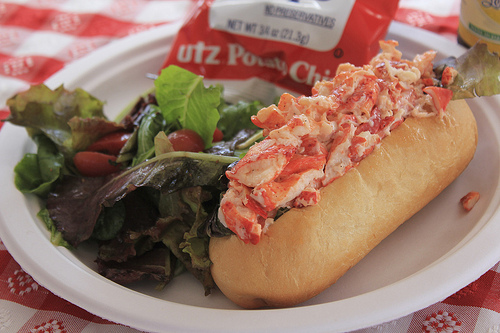
Increase Fiber Intake
Dietary fibers can be soluble fibers, which are slowly digested into bio active products, or insoluble fibers, which are not digested. An increased insoluble fiber content will expand the food volume without affecting the calorie content. Insoluble fibers delay the food in the stomach entering the duodenum and bind with fatty acids promoting fermentation in the colon leading to alterations in cholesterol metabolism. Insoluble fibers regulate bile acid metabolism in the colon by binding to bile acids. Insoluble fibers reduce the plasma LDL levels reducing the risk of heart diseases. Insoluble fibers also increase the oncotic pressure of intestinal contents holding water in the intestinal lumen and provide bulk to stools. Therefore insoluble fibers prevent constipation.
- Important notification about information and brand names used in this slideshow!
- Photo courtesy of Halcyon Yarn by Flickr : www.flickr.com/photos/halcyonyarn/5951449041/
- Clinical nutrition by Alan R Gaby






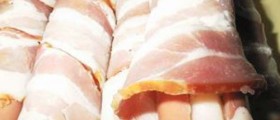

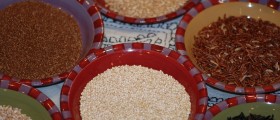


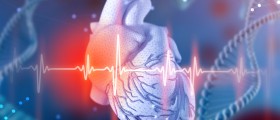




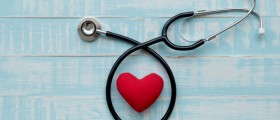
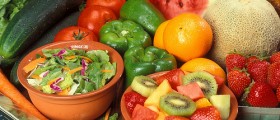









Your thoughts on this
Loading...